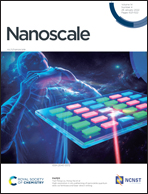Fundamental understanding of electrocatalysis over layered double hydroxides from the aspects of crystal and electronic structures
Abstract
Layered double hydroxides (LDHs) composed of octahedral ligand units centered with various transition metal atoms display unique electronic structures and thus attract significant attention in the field of electrocatalytic oxygen evolution reactions (OER). Intensive experimental explorations have therefore been carried out to investigate the LDHs synthesis, amorphous control, intrinsic material modifications, interfacing with other phases, strain, etc. There is still the need for a fundamental understanding of the structure–property relations, which could hinder the design of the next generation of the LDHs catalysts. In this review, we firstly provide the crystal structure information accompanied by the corresponding electronic structures. Then, we discuss the conflicts of the active sites on the NiFe LDHs and propose the synergistic cooperation among the ligand units during OER to deliver a different angle for understanding the current structure–property relations beyond the single-site-based catalysis process. In the next section of the OER process, the linear relationship-induced theoretical limit of the overpotential is further discussed based on the fundamental aspects. To break up the linear relations, we have summarized the current strategies for optimizing the OER performance. Lastly, based on the understanding gained above, the perspective of the research challenges and opportunities are proposed.

- This article is part of the themed collection: Recent Review Articles


 Please wait while we load your content...
Please wait while we load your content...